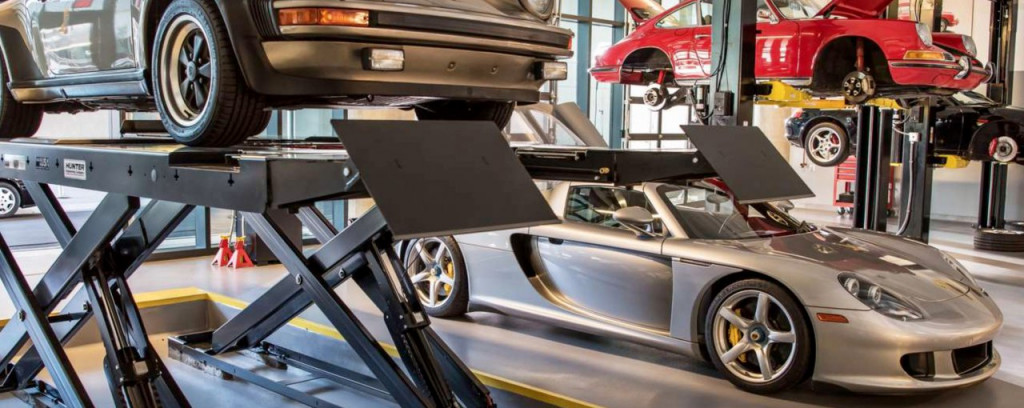When Dominik Pokoj bought this 20-valve Coupe five years ago, it was a wreck. Despite the original plan to simply restore it, ideas spiralled and Dominik was left with this wild, modified Audi B3 Coupe.
Feature first appeared in Fast Car magazine issue 420. Words: Dan Bevis. Photos: Mike Crawatt
Comebacks are, more often than not, rather exciting. When Charlie Sheen returned from his rollercoaster of narcotic rants to the comforting bosom of network television, the entertainment world was on the edge of its seat. Ozzy Osbourne’s shaking form on reality TV bonanza The Osbournes showed a man visibly damaged, but undeniably triumphant. When Paul Weller knocked Wild Wood out of the park in ’93, the vagaries of the Style Council were all but forgotten as the Modfather returned reborn. It’s true to say that comebacks are, assuming you ignore the ill-fated Spice Girls musical, generally considered to be pretty stonking news. So, ladies and gentlemen, allow us to present the glorious return of the Audi B3 Coupe.
Naturally, to many enthusiasts in the scene, the B3 never really went away; if you’re reading Fast Car then there’s a good chance that you’ve heard of the model and have a fair idea of what it’s about. But if not, here’s a quick history lesson: the B3-generation Audi 80 saloon was launched in 1986, this time on its own unique platform rather than one shared with the VW Passat. The car was swoopy and aerodynamic, and galvanised – all forward-thinking stuff for the eighties. As with previous generations, an upmarket variant was offered, badged Audi 90, which came with a 5-cylinder engine, and the really interesting development came toward the end of the decade. In 1988 Audi shortened the 80’s wheelbase and reworked the rear suspension to fit into the pretty and well-proportioned Coupe shape, and the following year began offering their first 20-valve engine since the turbo unit in the Sport Quattro. The result of all this was a sporty-shaped variant of the 80, packing a 170bhp 2.3-litre 20-valve nat-asp 5-pot – either with or without quattro AWD. Bang a turbo on the latter and it becomes the S2. There you go, all clued up.

So why are we mooting the B3 Coupe’s presence here as ‘a comeback’? Well, it’s simply that these late-’80s/early-’90s models are seriously hot property right now; while they seemed to disappear from the common enthusiasm for a time, those that remain are coming back onto the scene in full force. There’s a robust core of cars that have unexpectedly leapt right from ‘whatever’ to ‘woah!’ on the petrolhead intrigue spectrum. Cars that were everywhere back in the nineties, but often weren’t considered sufficiently interesting or noteworthy to save and thus gradually marched their way into the world’s crushers, only now to be lamented by old-school enthusiasts who’ve cottoned on to the fact that there aren’t many left.
For Dominik Pokoj, though, the B3 Coupe you see laying frame on these pages isn’t some new fad, leapt upon because they’re so hot right now. He started modding this car five years ago, back when he was nineteen, and it’s hard to deny that the 20-valve 5-cylinder variant is a pretty forthright choice for a teenager. And now, at the age of 24, Dominik’s turned the Coupe into the car it always deserved to be.

“The car was in really bad shape when I bought it,” he recalls, with the steely gaze of chipped flint of somebody who’s seen a few things and somehow made it through unscathed. “It wasn’t legal to use on the road, it had so many faults and defects. And a lot of rust and dents too!”
Sounds like a bit of a dog. Why would Dominik take the plunge on something that seemed like such a lost cause? “Quite simply, there is no more beautiful vehicle that reflects the Coupe shape,” he reasons. “The history of the older Audi models is indescribable.”

Fair enough, really. Such decisions are informed more by passion than rationality – he’d decided that the B3 Coupe was the car for him, and nothing would stop him achieving that dream. This reality is borne out by the fact that this isn’t even the car Dominik went to buy in the first place: “I drove with my father to Kassel, which is about 550km from my home in Schmiedorf, to look at a different Coupe,” he recalls. “But the owner of that one had driven the vehicle dry and the fuel pump had dragged a load of dirt through the engine; it wasn’t running properly and there was no way it would have made the 550km return journey. I was really disappointed, and I didn’t want to come home empty-handed, so I was looking out for other Coupes all the way home. We found this car, a 1990 20v in Emerald Green, in Landshut – and, despite the poor condition, I bought it and brought it home!”
With a vision in mind of what he wanted to achieve, Dominik set to work straight away, fully dismantling the car and starting to cut out the rust. However, projects are so often subject to mission creep, and over the lengthy restoration process the plan began to transmogrify and evolve. “I initially planned just to fix the rust and dents and get it running,” he grins, “but a bit more ended up happening.”

He’s not kidding. What followed was an obsessive and fastidious rebuild, returning the interior back to factory-stock, to the extent that today he reckons it’s like driving a brand new car. The Coupe had a Kamei spoiler fitted as-new from the factory, and those timeless eighties lines have been beautifully restored. However, as you will no doubt have deduced by now, this isn’t simply a story of a man buying a tired car and restoring it. While elements of the car are just as Audi intended – the steel panelwork, and the jewel-like 20-valve motor – Dominik’s got a bit carried away with developing the sporting theme. The body, now a crisp white, wears a custom Audi Sport livery which certainly announces its presence with a figurative fist to the solar plexus, and it’s rather better acquainted with the tarmac than it ever was in the 1980s. This is thanks to the custom installation of a TA Technix air-ride setup, running Air Lift management, which gets the retro lines hard-parked like a boss over those tasty BBS RS splits. These bolt to S2 hubs, with the uprated Girling 60 brakes native to the S2 peeping through those myriad BBS spokes.
So he’s mastered the look, the stance, the menace and the old-school vibe – but Dominik wasn’t merely paying lip service to the car’s sporting pretensions. 170bhp was considered rather a lot back in the day, and he’s accentuating this 5-pot’s prowess by authentically turning the innards of the Coupe into something pure race car. “Installing the custom fuel cell was the hardest part of the project,” he ponders, although you get the feeling that none of it was strictly easy given the fastidiousness with which it’s all been finished. The full rollcage is a work of art, neatly complemented by the Recaro seats and Schroth harnesses. What trim remains in situ is artfully reworked in Alcantara and carbon fibre, and the dual x-braces in the rear separate the functional cabin from the sumptuously trimmed air install in the boot.

“It drives so well now – the engine has had so many new parts installed and it runs like a dream,” he smiles. “If there was one thing I’d change with the car though, perhaps I’d go back in time and buy a quattro version instead. Maybe I should sell this one and buy an S2…”
Well, such are the fickle whims of fate. We always want what we don’t have, that’s just the inherently envious nature of the human condition. One thing’s for sure, however: Dominik knows what he’s about here, he’s an Audi Coupe guy. If there’s going to be a B3 comeback, this is the man leading the charge.

Tech spec: Modified Audi B3 Coupe
Engine:
2.3E 20-valve 5-cylinder, 5-speed manual
Power:
170bhp (est.)
Chassis:
8.5x17in ET37 BBS RS 236 wheels, 225/45 Hankook tyres, Audi S2 wheel hubs, Girling 60 brake system, TA Technix air-ride with Air Lift management and twin Viair compressors
Exterior:
Kamei spoiler, Audi Sport livery, debadged grille
Interior:
Full rollcage, Recaro seats, Schroth harnesses, Audi S2 white dials, custom Wiechers fuel cell, custom air-ride install, Luisi Sports steering wheel, carbon fibre dash and door trims, carbon sills, Alcantara pillar trim








